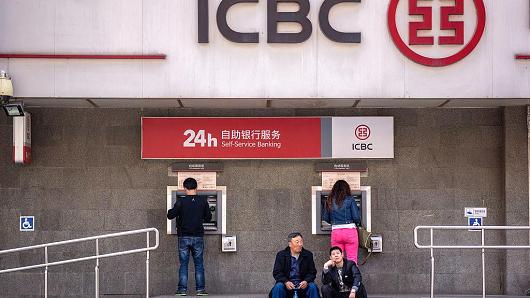China has allowed its five biggest banks to temporarily lower the amount of money that they must hold as reserves to relieve pressure in its financial system as demand for cash surges ahead of the Lunar New Year holiday, three sources with direct knowledge of the matter said.
The People’s Bank of China (PBOC) has cut the reserve requirement ratio (RRR) for the banks by a full percentage point, taking the ratio down to 16 percent, the sources said.
The central bank’s move, its first reduction in RRR in nearly a year, comes after it pumped a record amount of liquidity into markets this week in a bid to avert a cash crunch heading into the country’s biggest holiday of the year.
Earlier this week, short-term funding costs had spiked to their highest levels in nearly 10 years on fears that liquidity was sharply tightening, sparking a jump in the yuan currency.
But China watchers polled by Reuters had not expected a cut in RRR until the third quarter of 2017, as such a move would put more pressure on the ailing yuan.
Key funding and money market rates had shown signs of easing on Friday after the PBOC’s massive injections, but remained well above normal levels.
‘A strange move’
“Today’s move seems to suggest that liquidity conditions are tighter than authorities’ expectations, as capital outflows remain strong,” said Zhou Hau, senior emerging markets economist at Commerzbank in Singapore.
“But in the meantime, an outright easing will add pressure on the yuan exchange rate as well. That could be the reason behind today’s strange move.”
The central bank will restore the RRR for the five banks to the normal level at an appropriate time after the holiday, according to the sources.
“This is a temporary adjustment, and is mainly in response to the cash withdrawal, tax payment and reserve payment. (The RRR) will go back to the normal rate after the Lunar New Year holiday,” one source said.
The PBOC said later on Friday that it will provide temporary liquidity support for several major commercial banks for 28 days to ensure adequate liquidity ahead of the Lunar New Year, according to a notice posted on its official microblog.
The funding cost for the liquidity support will be about the same as the open market operations rate over the same period, the PBOC said, without specifying any requirement for collateral.
Annual tightness
Liquidity always tightens in China ahead of the Lunar New Year holiday, which this year starts on Jan. 27 and ends on Feb. 2, as households and companies usually withdraw huge amounts of cash from banks.
The central bank typically responds by injecting ample funds into the market, but some traders say its injections this year have barely been keeping up with heavier demand.
This year, the holiday also extends over the month-end, when corporate cash demand increases and some tax payments are due, adding to the strain.
source”cnbc”






